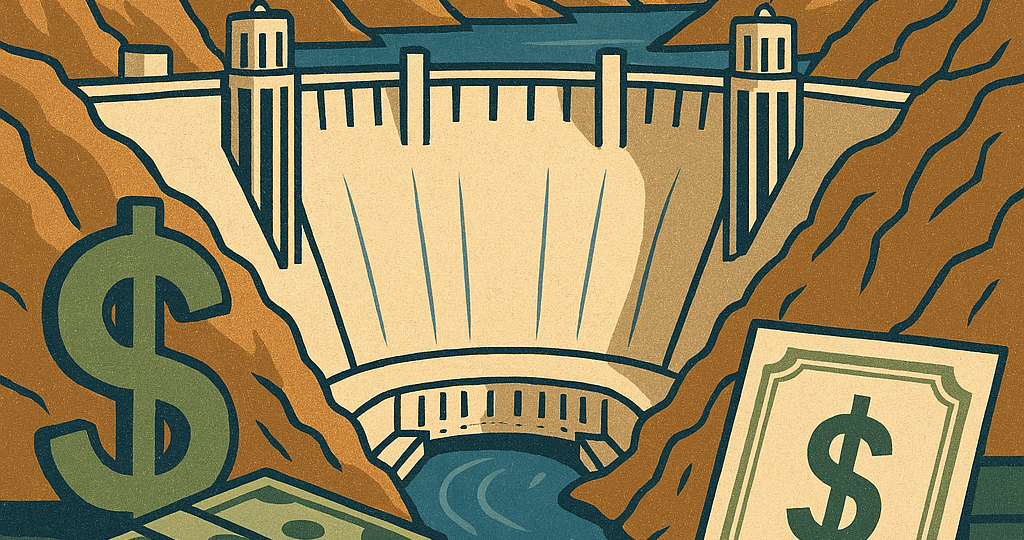
Welcome back. We’re talking about quite a boring aspect today yet it is important: the finances.
Building the dam was only half the story—its real significance came from how it reshaped the economy, politics, and power distribution of the American Southwest.
The dam was financed through long-term contracts to sell electricity to utilities and cities across the region. Rather than relying solely on federal funds, the Bureau of Reclamation secured future revenue streams by guaranteeing affordable power to fast-growing areas. This ensured not only that the project would pay for itself but also that entire communities could thrive with reliable electricity and water control.
Major contracts were awarded to entities like the Los Angeles Department of Water and Power, the Metropolitan Water District of California, the Arizona Power Authority, Southern California Edison, and Nevada’s Colorado River Commission. These groups became the backbone of the Southwest’s industrial and urban expansion, with Hoover power fueling everything from agriculture to defense industries during World War II.
Internationally, the dam played into diplomatic commitments. Under the 1944 U.S.–Mexico Treaty, America agreed to deliver a guaranteed share of 1.5 million acre-feet of water annually to Mexico, recognizing the Colorado River as a resource that crossed borders and demanded cooperation. Domestically, disputes simmered for decades until the 1963 Supreme Court case Arizona v. California clarified how water would be divided among the Lower Basin states.
The politics of Hoover Dam extended beyond water and power. Even its name was a point of contention. Initially called “Hoover Dam” during construction, it was renamed “Boulder Dam” during the Roosevelt administration, only for Congress to restore the original name in 1947. And as late as 2011, the Hoover Power Allocation Act revisited contracts and renewed power allocations through 2067, showing that the dam’s legacy is still very much alive in policy today.
From financing innovation to shaping interstate and international agreements, Hoover Dam was as much a political project as it was an engineering one. It did not just tame the Colorado River—it created a framework for how the Southwest would grow, argue, and negotiate for generations.
Let’s talk about the legacy and impact tomorrow.
RELATED POSTS
View all


